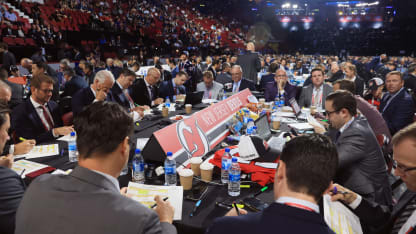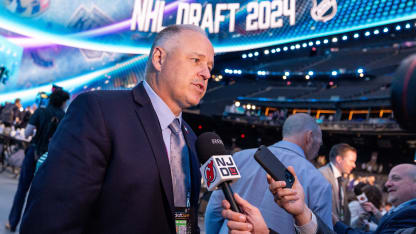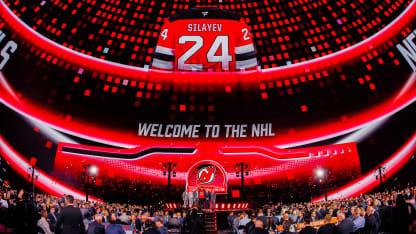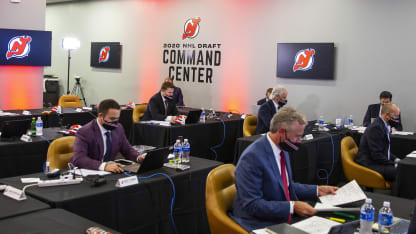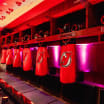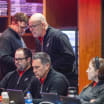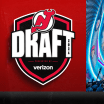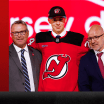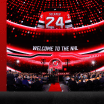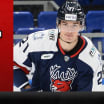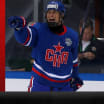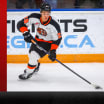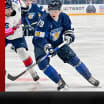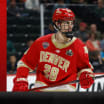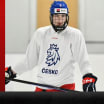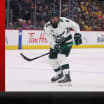“He’s strong, he’s heavy, works down low, physical. I like the way he plays. But he is what he is, a bottom-6 guy.”
“I wouldn’t say he fell off a cliff. But his play really dipped in the second half. So, who is the real player?”
“What’s his ceiling? Third round? Fourth round? How high would you take him?”
These phrases were thrown around early afternoon Tuesday inside a meeting room at the Prudential Center. Gathered around a U-shaped table were members of the Devils hockey operations department and amateur scouting staff.
Their mission? To go through every draft eligible player for the upcoming 2025 NHL Draft in late June and start to compile their ultimate list, a final ranking of every player from best to worst.
Tuesday marked the first day of meetings that will happen continuously over the next few weeks while the team evaluates every potential prospect. The Devils are putting in the arduous and tedious work now, so that come draft time, the club can rely on their list knowing that they put in the work making it as accurate and aligned as possible.
“The biggest issue with him is consistent compete. He gets lost in the mix. He’s not an energetic player. He finished more checks, but I don’t think it’s natural. I think someone told him to do it.”
“I still worry about his heaviness. He’s a risky pick.”
“He’s one of their leading scorers but hasn’t faced any real adversity.”
The Devils regional scouts have put in an entire year’s worth of work while putting together their book on every single prospect. They watched numerous games, talked to the prospect, coaches, trainers – and even Zamboni drivers in some cases – to do their due diligence on every prospect.
The cross-over scouts have also done their work, reading the regional scouts’ reports and getting their own eyes on prospects that have jumped out to them. All parties have built out incredibly detailed information of the current draft pool.
Now comes the process of putting players into proper placement and doing the nitty gritty work of building the list.
Mark Dennehy, the Devis’ Chief Scout, opened the meeting with one directive to his team.
“Just get the list right.”
And with that, the floor was opened for discussion and debate on prospects from all over the world over the course of several hours.
“He plays the right way. He’s connected between the D and forwards. He doesn’t cheat the game.”
“He works hard in the gym, works hard in practice. But it’s not his natural inclination to finish checks. The coaches are pushing him hard to do that.”
“Every game I saw him; he was the best player on the ice.”
At times, the scouts were on the same page with prospects. At other times, differing opinions were offered. There was an open dialogue in the room and the entire staff was involved in the process.
“We do want people to share their opinions, then we’ll have some fervent debate about those opinions, there will be a vote and then we try to put the list together based on that,” Dennehy said. “Our list is going to take a huge step over the next couple of days, but it’s far from being done until draft day. You’ll make changes leading up to that, some based on the combines, some based on World Championships.
“There’s still a lot of work to be done, but I like the steps we’ve taken.”
One of the beginning steps to building the list is finding out where players should fall in terms of round. That can be a hard task for the regional scouts and even some cross-over scouts, because they aren’t seeing every single prospect. So, the Devils start with a simple philosophy.
“We ask (regional scouts) to put them into a category. It’s more about where would you be excited about drafting them?” Dennehy said. “We don’t control where they’ll be available. But where would you be excited about drafting this player.
“At the end of the season, we will then put them into a grid that suggests where they’ll be.”

